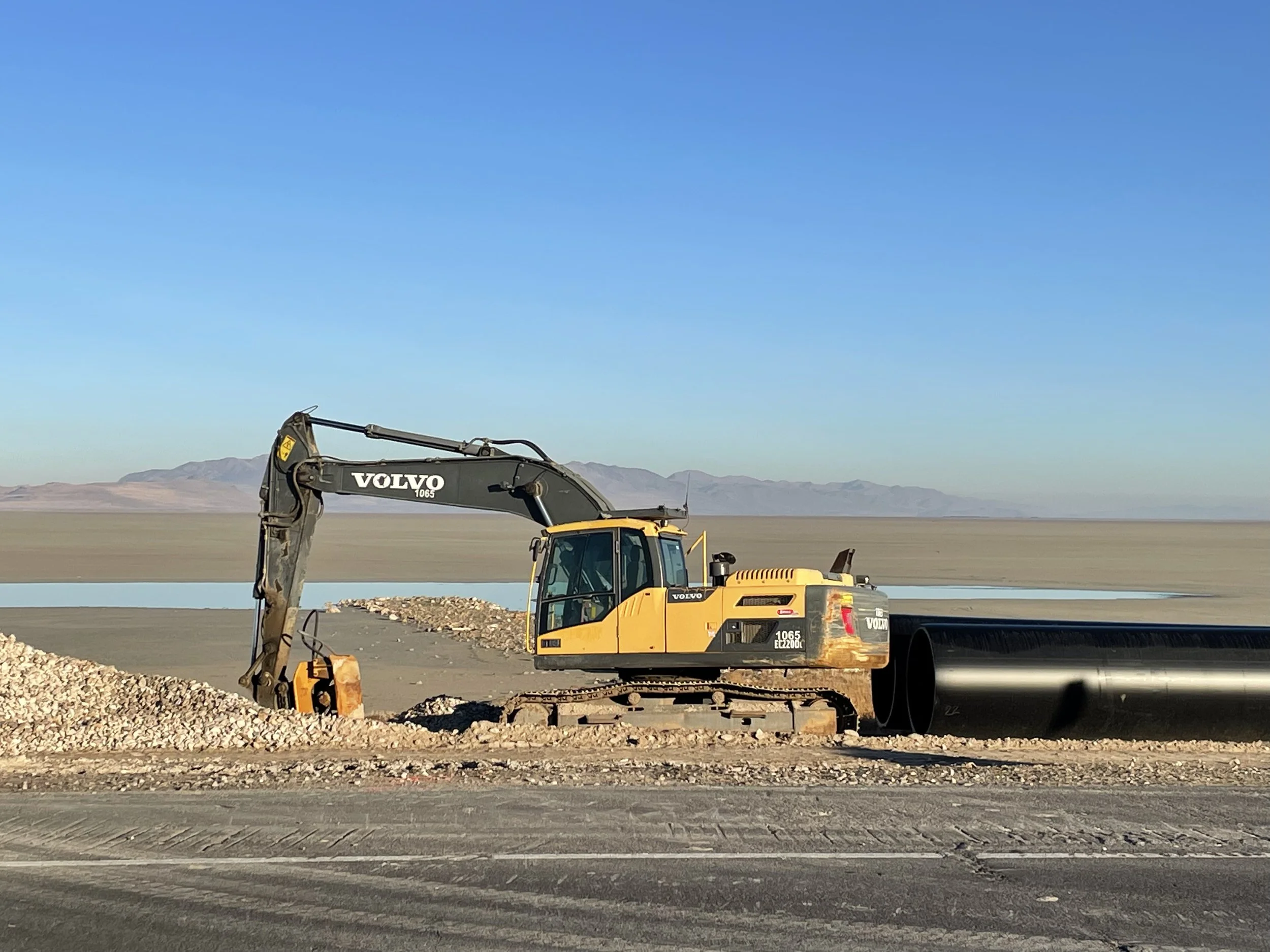On effluent and grief.
An Eared Grebe at the Great Salt Lake in April of 2021. This will soon be the location where the sewage pipeline being built along the Antelope Island causeway will dump into the main body of the lake.
This week I learned that the purpose of the road construction along the causeway leading out to Antelope Island on the Great Salt Lake is to install a pipeline to carry effluent (aka treated sewage, aka recycled municipal water) seven miles across the now dry lakebed to dump it in the main body of the Great Salt Lake, right at the spot where I was laying when I took this photo of an Eared Grebe in April of this year.
My first thought is that all of Davis County’s sewage will be dropping in hot at my favorite bird photography location, and it will probably be too gross for me to go there any more. As sad as that makes me, it’s more heartbreaking to consider what this development means for the millions of grebes, ducks, avocets, sandpipers, plovers, stilts, phalaropes, and dowitchers scheduled to arrive here in spring.
To be perfectly clear, the sewage itself isn’t the problem. Recycled municipal water is an absolutely essential source of water for the Great Salt Lake, and it is already going into the lake at a point six or seven miles away to the Southeast, in Farmington Bay. So why a pipeline to carry the water all the way across Farmington Bay? I’m guessing a little here, but I think it’s because Farmington Bay has shrunk to a mere trickle with just a few salty remnaining pools (that the birds are now cramming into by the tens of thousands). This means the effluent is essentially being poured onto a dry lakebed, which presumably doesn’t comply with water quality standards. Hence the plan to pipe the sewage across Farmington Bay and into Gilbert Bay where there’s still water. This plan will forestall the need to make upgrades to the sewage treatment facility.
Did you know that recycled municipal water comprises 40% of the water going into Farmington Bay? The diversion pipe means that Farmington Bay, one of five Globally Important Bird Areas on the Great Salt Lake, is officially abandoned. The powers that manage the water around here don’t foresee filling it up again, and by moving 40% of its remaining water out, they are sealing its fate. The old proverbial nail in the coffin. Except for a few impoundments created by the wetland preserves and the duck clubs on the fringes, Farmington Bay is no more. Next time you drive the seven-mile causeway to Antelope Island, look left. Instead of the Great Salt Lake, you will see the remnants of the Jordan River oozing across the new Farmington Salt Flat.
Construction along the causeway to Antelope Island in the Great Salt Lake is to build a pipeline to move sewage across the dry lakebed.
So Farmington Bay is dead to us now and we will bestow our recycled sewage upon Gilbert Bay. But did I mention that as of October, the location where the new pipe will dump its load is already dry? The lake is shriveling away like a wad of burning toilet paper. What happens when the water retreats another six miles next summer? Do we lay six more miles of pipe? And how about when the lake is no more, just a smear of salty sewage rime?
I have an urgent message for the people laying the pipe: THE GREAT TOILET BOWL AT THE BOTTOM OF THE BASIN MUST BE FILLED TO A MINIMUM LEVEL FOR PROPER OPERATION.
Last week I also sat through a town hall where everybody agreed that the situation at the Great Salt Lake is dire, an environmental crisis with devastating consequences for humans and for birds. I also learned that despite watching this train coming for the past decade, the state of Utah has formulated absolutely no short-term plan to stave off the impending collapse of the Great Salt Lake ecosystem that supports ten million birds. Our current strategy hinges around hoping (praying?) for above-average snowfall this winter. Nobody at the state level claims to have any authority to take one single meaningful action to avert the crisis.
Yet we were able to foresee, plan, approve, fund, and execute a seven-mile pipeline construction project in order to avoid upgrading our sewage treatment facilities for a year or so while the lake bleeds out. The pipeline is an absurd exercise in kicking the can down the road, a waste of money, and a colossal failure to tackle the real problem, which is that the Great Salt Lake is disappearing.
I have an urgent message for the policy-makers: ALL HANDS ON DECK! EMERGENCY OVERHAUL OF AGED-OUT WATER POLICIES MUST BE PERFORMED TO AVOID ENVIRONMENTAL TRAIN WRECK AND BREACH OF PUBLIC TRUST.
Tomorrow I will come back to you with a story of hope and resilience, progress made and actions that you can take to save the Great Salt Lake for the birds that we love and the health of our city and the entire Intermountain West. But today I am grieving. For our failures of leadership and infrastructure and advocacy. For the destruction of a place of spectacular beauty, and for the millions of birds who might not make it to their breeding grounds in the spring.

